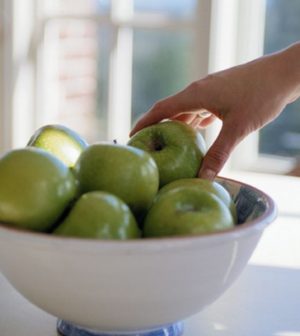- Navigating Your Midlife Crisis: Embracing New Possibilities
- City Raccoons Showing Signs of Domestication
- Mapping the Exposome: Science Broadens Focus to Environmental Disease Triggers
- One Week Less on Social Media Linked to Better Mental Health
- Your Brain Changes in Stages as You Age, Study Finds
- Some Suicide Victims Show No Typical Warning Signs, Study Finds
- ByHeart Formula Faces Lawsuits After Babies Sickened With Botulism
- Switch to Vegan Diet Could Cut Your Greenhouse Gas Emissions in Half
- Regular Bedtime Does Wonders for Blood Pressure
- Dining Alone Could Mean Worse Nutrition for Seniors
Tasty Ways to Get More Fiber

You probably know that it’s a good idea to eat more fiber. But do you know why?
Fiber is found in plant-based foods. It adds volume to your diet, but passes through the intestines quickly because the body can’t digest it. That’s why fiber can make you feel full faster and prevent constipation. It may also help lower your cholesterol level and reduce your risk for heart disease, obesity and diabetes.
According to the Academy of Nutrition and Dietetics, women should get 25 grams of fiber every day and men, 38 grams. Yet only 5 percent of Americans meet this guideline.
With a little effort, you can reach this healthful goal by eating a variety of fiber-rich foods rather than depending on supplements. That’s a good idea because you also get the foods’ other nutrients — vitamins, minerals and more.
Vegetables are a major source of fiber, some more than others. These include leafy, raw greens, and cruciferous ones like broccoli and Brussels sprouts. Depending on the veggie, you can enjoy it raw or cooked. Legumes like lentils, dried peas and all manner of beans are other good sources of fiber; many even pack in some protein, making them a great substitution for meat.
Nuts and seeds also add fiber to your diet. Just watch quantities since they’re very calorie dense.
Put fresh and dried fruit on your list, too. Apples and pears with the skin are good choices. Also try raisins and prunes.
Hot cereal like oatmeal and cold cereal like bran flakes provide good amounts of fiber. And, of course, don’t forget whole wheat bread and pastas, bran muffins, brown rice and even popcorn.
However, ramping up your fiber intake too quickly can cause gas and bloating.
So if you’re looking to fill up on fiber, experts say start slow and gradually increase the amount you eat every day.
More information
For more high-fiber foods along with their calories and portion sizes, check out this list from the U.S. Dietary Guidelines.
Source: HealthDay
Copyright © 2025 HealthDay. All rights reserved.










